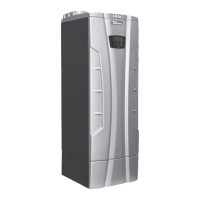
Do you have a question about the RBI Boiler and is the answer not in the manual?
Installation must conform to applicable codes and standards, including NFPA and CSA.
Specific installation requirements for Massachusetts, including CO detector and signage mandates.
Explains the meaning of Warning, Caution, and Notice symbols used in the manual.
Details model numbers, power inputs, and distinctions between IB and IW types.
Illustrates and labels the various internal and external components of different heater models.
Describes the intended applications for IB boilers and IW water heaters, highlighting system water quality importance.
Explains how outdoor reset control optimizes boiler efficiency by adjusting supply temperature.
Guidelines for selecting a suitable location, considering clearances, ventilation, and safety.
Specifies minimum clearance distances required for installation and maintenance access.
Details requirements for vent and combustion air piping systems, including direct vent and room air options.
Instructions to prevent contamination of combustion air, listing potential contaminants.
Safety warnings and instructions for safely lifting and transporting the heater unit.
Step-by-step instructions for physically mounting the heater unit, including removing packaging.
Refers to figures that provide all dimensions for each heater model.
Details requirements for supply and return piping, including safety valves and material considerations.
Lists and describes essential piping components required near the boiler for proper operation.
Guidelines for installing and sizing expansion tanks to manage thermal expansion.
Recommends piping configurations for indirect water heaters, ensuring DHW priority.
Covers requirements for hot and cold water piping, including pressure relief valves and material codes.
Lists necessary piping components for the water heater, considering pressure drops.
Warning about potential scald injuries from high water temperatures and recommending mixing valves.
Discusses water quality parameters and their impact on pressure drops and scaling.
Instructions for proper disposal of condensate, including material requirements and potential hazards.
General safety precautions and requirements for electrical connections to the heater.
Steps for connecting the main power supply cable, including fused disconnect requirements.
Steps for connecting the IB boiler to an indirect water heater for domestic hot water.
Instructions for connecting an IW water heater to a storage tank for domestic hot water.
Details the electrical connections required for operating multiple heaters in a cascade system.
General requirements for vent and air piping systems, including code compliance and support.
Covers approved vent materials, installation procedures, and sealing for PVC/CPVC, stainless steel, and polypropylene.
Details various vent termination types (single pipe, two pipes, concentric) and location requirements.
Instructions for connecting the gas supply, including unions, shut-off valves, and leak testing.
Steps for checking and verifying the inlet gas supply pressure for proper operation.
Detailed procedure for converting the model 199 heater between natural gas and propane.
Procedure for converting multiburner models (399-1000) between natural and propane gas.
Essential instructions for users on how to operate the heater safely and efficiently.
Information on gas type conversion requirements and the need for qualified technicians.
Step-by-step procedures for starting up both IB boilers and IW water heaters.
Guide for performing combustion analysis and adjusting CO2 levels for optimal performance.
Instructions for checking water pressure in IB boilers and IW water heaters to prevent errors.
How to adjust the domestic hot water temperature for the IW water heater.
Setting the temperature for an indirect water heater connected to an IB boiler.
Adjusting the heating supply temperature for IB boilers based on ambient conditions.
Explains the outdoor reset feature for optimizing heating efficiency and comfort.
Accessing and adjusting parameters via the installer menu for diagnostics and setup.
Overview of diagnostic information displayed on the unit, including error codes.
Outlines the importance of regular care and maintenance, detailing schedules for technicians and users.
Procedure for inspecting gas piping for leaks using a soap solution.
Inspecting gas and water piping for leaks and general condition.
Step-by-step guide for cleaning the burner and heat exchanger for optimal performance.
Procedures for maintaining and cleaning the condensate trap and neutralizing box.
How to connect the display to different burners on multiburner units.
Instructions for moving or replacing a control board on multiburner units.
Provides specifications for heater models, including heat input, gas flow, and operating parameters.
Lists spare parts and their corresponding model numbers for different heater series.
Detailed breakdown of spare parts for model 199, with part numbers and descriptions.
Explains how to navigate menus and understand parameter changes with flowcharts and symbol definitions.
Lists and describes parameters available in the factory menu for appliance settings and diagnostics.
Visual representation of the operational sequence for IB boilers, detailing steps and conditions.
Visual representation of the operational sequence for IW water heaters, detailing steps and conditions.
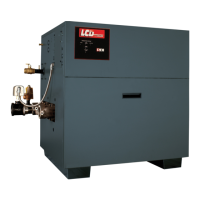
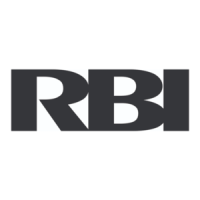

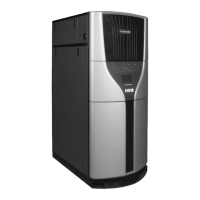
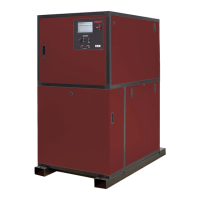
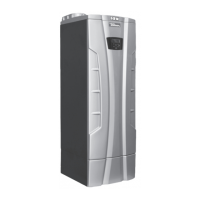




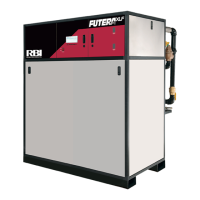
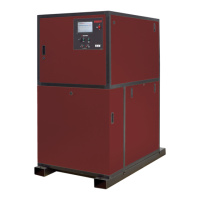
